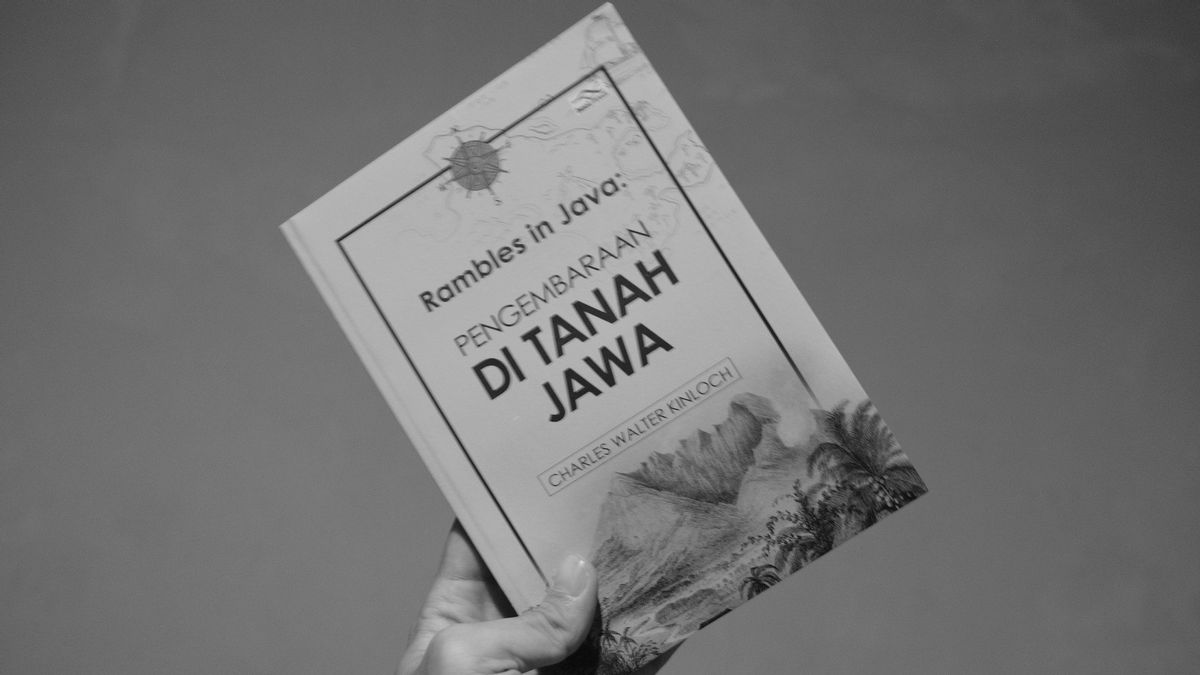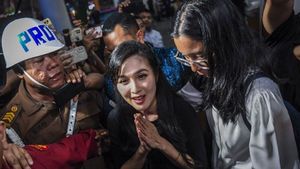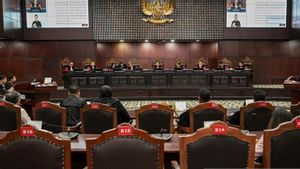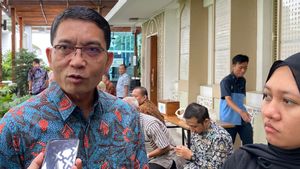JAKARTA - Tourism is one of the most widely recognized faces of Indonesia. The foundation of the tourism industry has been built a long time ago through the various travel notes written by many travelers from 1860-1942.
Some of the travelers were naturalists, journalists, archaeologists, and company officials. The notes are told personally. So close that it encouraged many people to travel too. Like Marco Polo who inspired Columbus around the world through travel notes to the east.
There is an interesting view from him about writing subjective travel notes. Chinese novelist Gao Xingjiang reveals: You combine travel notes, moralistic chatter, feelings, notes, scribbles, discussion without theory, fairy tales that don't look like fairy tales, you copy some folk songs, you add nonsense that is like a legend, even though it's your writing yourself, and you call it all fiction?
This means that in writing travel notes, subjectivity is the main ingredient. That is why British writer Charles Walter Kinloch made subjectivity a weapon in compiling his travel notes in the book Rambles In Java (1853).
It is said that Kinloch was the first traveler to write a book about his adventures in Java. The experience of exploring the archipelago in two months - June to July 1852 - was able to inspire travelers, adventurers and other European traders to visit the Equatorial Country until now.
The areas traversed by Kinloch at that time included Batavia (Jakarta), Bogor, Bandung, Sumedang, Cirebon, Tegal, Banyumas, Purworejo, Magelang, and Semarang. Everything Kinloch told me so honestly.
However, between short visits, there are some interesting experiences. For example, when Kinloch was directly entertained by the Governor General of the Dutch East Indies or when he got lost in Bogor, he enjoyed the temples in the archipelago. Everything feels personal, but it's so fun to listen to, including how Kinloch expresses his views on understanding the characteristics of the Javanese.
Meet the Governor GeneralAt that time, not just anyone could visit the Dutch East Indies (Indonesia). This is because the costs incurred are not small and transportation is still limited. So, those who came were almost certainly the very rich or very wealthy.
So, whoever foreigners who wish to travel will be the direct guests of the Governor General of the Dutch East Indies. The reason is that none other than those who come will definitely take care of permission from the highest authority in Java. Kincloch too.
However, something unexpected, Kincloch actually received an invitation from the Governor General to attend a party at his residence, the Bogor Palace. It was there that Kincloch witnessed the magnificence of the Company-style welcome. For him, it was the best moment during his visit to Java Island.
“The parties these nights are done in true Dutch style. Very many small dishes with their usual characteristics: sour and savory butter followed by sweets, cotton candy, plum sugar. The wine, which is served in a variety of varieties, is very delicious. However, our British tastes prefer solid, nutritious British dishes. And we are worried about judging badly on the best dinner we have encountered in Java, ”it reads on page 46.
Get lost in BogorAnother interesting moment in the book is when the Kinloch group traveled to the Dutch East Indies without a coolie or a servant as a guide.
As a result, they run into a problem that almost every traveler experiences when in a new area: getting lost. When returning from the Governor General's Palace in Bogor, Kinloch's group got lost when they wanted to return to the hotel.
They asked a number of local residents who unfortunately did not understand the language Kinlcoh spoke, until finally Kinloch and his group found a guide who brought them back to the hotel. At that moment Kinloch realized that the local residents did not know Buitenzorg, but Bogor.
Excursions to the templesSince the Governor General of the Dutch East Indies Thomas Stamford Raffles wrote the masterpiece The History of Java (1817), many foreign tourists have expressed admiration for the splendor of the temples in Java.
Kincloch was among them. While in Magelang, visiting temples is his main agenda.
“Neither history nor fairy tales give us much information regarding these unique ruins. All we know about them is that the ruins were built by Buddhists. Among the ruins, Borobudur Temple is the much wider, ”page 94.
Understand the characteristics of the JavaneseKinloch's long journey made him understand how the characteristics of the Javanese region, from natural resources, tourist attractions, strange tax systems, to the religions practiced by local residents.
“The Javanese adhere to the beliefs taught by Muhammad. However, the fact that they previously adhered to Hindhu and Buddhist teachings is proven by facts that should be considered convincing, "appears on page 113.
Presumably, that was the excitement that was recorded in Kinloch's journey in Java. He did not only talk about comfort, but also about many difficulties, such as hot weather, sickness, sick Dutch food, bad accommodation, and other things.
Even so, Kinloch's writing that is interesting and not boring is able to take the reader on a tour of the past. At least, to know the history or tourist attractions that were popular at that time.
Detail
Book Title: Rambles in Java: Wanderings in Java
Author: Charles Walter Kinloch
First published: 1853 (Indonesian version: 2019)
Publisher: Indoliteration
Number of Pages: 140
The English, Chinese, Japanese, Arabic, and French versions are automatically generated by the AI. So there may still be inaccuracies in translating, please always see Indonesian as our main language. (system supported by DigitalSiber.id)













